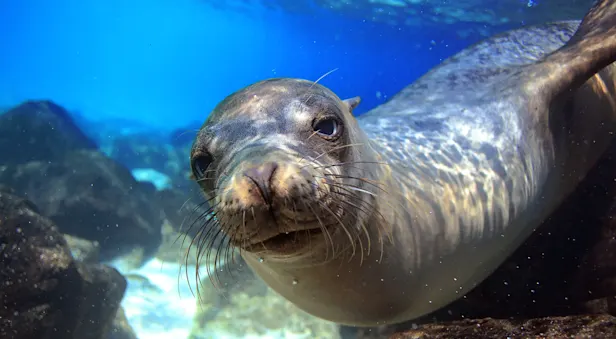Darwin's Finch Facts | Galapagos Islands Wildlife Guide
Darwin’s finches, named due to their role in Charles Darwin’s theories on evolution, are ostensibly the most renowned land birds of the Galapagos. Fascinated with diversity found among the thirteen species and the speed with which they evolved from a common ancestor to adapt to the varied supply of food available on individual islands, Darwin discovered that these adaptations mainly showed up in the shape and size of beaks.
Though these 13 finches are the most well-known and scientifically important Galapagos birds, they are not very remarkable looking. Endemic and typically easy for visitors to spot, it takes an expertly trained eye to differentiate the thirteen species who scientists believe descended from a shared ancestor. The differences in distribution, plumage, feeding habits, body size, beak size and shape helped inform Darwin’s theories.
Hood only supports the small ground finch, the warbler finch and the large cactus finch, which has a massive bill; thus, this island affords visitors the ideal opportunity to distinguish among these three species. The other species found across the islands are harder to distinguish from each other because of their similarities and idiosyncratic behaviors. For instance, some tree finches are found on the ground, some ground finches spend time in the trees, and cactus finches have been known to spend time in an array of habitats, including cacti.
To see each of the 13 species, you’ll need to travel a bit because certain species are not widely distributed. The medium tree finch lives only in the Santa Maria highlands while the mangrove finch exclusively exists on Isabela and Fernandina. Of islands open to visitors, the large cactus finch solely inhabits Genovesa and Hood. The other finches are more widely distributed.Header photo: Jane Whitney
See Darwin's Finches and Other Birds On These Galapagos Trips

Galapagos Discovery: The Nat Hab Experience
Small-group adventures aboard your choice of private yachts, led by our outstanding naturalist guides and photography pros. Snorkel and swim with sea lions, sea turtles and penguins on this incomparable nature odyssey.































